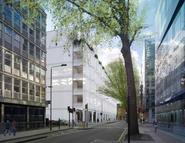Neil Burgess
Wednesday 15th March 2017
Time: 4pm
Ground Floor Seminar Room
25 Howland Street, London, W1T 4JG
Neural mechanisms of spatial and episodic memory
Episodic memory is characterised by a coherent, holistic, re-experience or imagining of events (Tulving, 1983), linked to a process of pattern completion in the hippocampus (Marr, 1971). I will describe experiments aimed at demonstrating the holistic nature of episodic memory in terms of contingency between successful retrieval of different aspects of the same event, and that this corresponds to hippocampal activity and incidental re-activation of the whole event.
I will discuss how the discovery of place cells, grid cells, head-direction cells and boundary vector cells in the hippocampal formation and gain-fields in parietal cortex allows the construction of a neural level model of spatial memory and imagery in which egocentric perception or imagery interacts with allocentric mnemonic representations in the hippocampal formation. I will consider application of this model to the effects of negative emotion on memory and the potential causes of flashbacks in post-traumatic stress disorder.
Finally, I will discuss how the various types of spatial cells cooperate to form a coherent representation of space and how grid cells might relate to theta rhythmicity, imagery and planning.
Related references
Bicanski A, Burgess N (2016) Environmental anchoring of head direction in a computational model of retrosplenial cortex. J Neurosci 36 11601-18.
Bisby JA, Horner AJ, Horlyck LD, Burgess N (2016) Opposing effects of negative emotion on amygdalar and hippocampal memory for items and associations. Social, Cognitive & Affective Neuroscience, 11: 981-990.
Bush D, Barry C, Manson D, Burgess N (2015). Using Grid Cells for Navigation. Neuron 87: 507-520.
Bush D, Burgess N (2014) A hybrid oscillatory interference / continuous attractor network model of grid cell firing. J. Neurosci., 34: 5065-5079.
Byrne P, Becker S, Burgess N (2007) Remembering the past and imagining the future: a neural model of spatial memory and imagery. Psychological Review 114 340-375.
Carpenter F, Manson D, Jeffery K, Burgess N, Barry C (2015) Grid Cells Form a Global Representation of Connected Environments. Curr. Biol. 25: 1176-1182.
Doeller CF, Barry C, Burgess, N (2010) Evidence for grid cells in a human memory network. Nature 463 657- 661.
Horner AJ, Bisby JA, Bush D, Lin WJ, Burgess N (2015) Evidence for holistic episodic recollection via hippocampal pattern completion. Nature Comms, 6: 7462
Horner AJ, Bisby JA, Zotow E, Bush D, Burgess N (2016) Grid-like processing of imagined navigation. Curr Biol 26: 842-7.
Bio:
Neil Burgess is Professor of cognitive and computational neuroscience, a Wellcome Trust Principal Research Fellow, and Director of the UCL Institute of Cognitive Neuroscience. After studying Maths and Physics at UCL he did a PhD in Theoretical Physics in Manchester and a research fellowship in Rome, before returning to UCL funded by a Royal Society University Research Fellowship and a Medical Research Council Senior Research Fellowship.
His laboratory investigates the neural mechanisms of memory using a combination of methods including computational modeling, human neuropsychology and functional neuroimaging, virtual reality and single unit recordings in freely moving rodents. His main goal is to understand how the actions of networks of neurons in our brains allow us to remember events and the spatial locations where they occurred. This basic mechanistic understanding at the neural level may serve as a starting point for interpreting data from psychology, psychiatry and neuropsychology concerning how memory works and how it can go wrong.
http://www.icn.ucl.ac.uk/Staff-Lists/MemberDetails.php?Title=Prof&FirstName=Neil&LastName=Burgess
 Close
Close



_RGB.jpg)